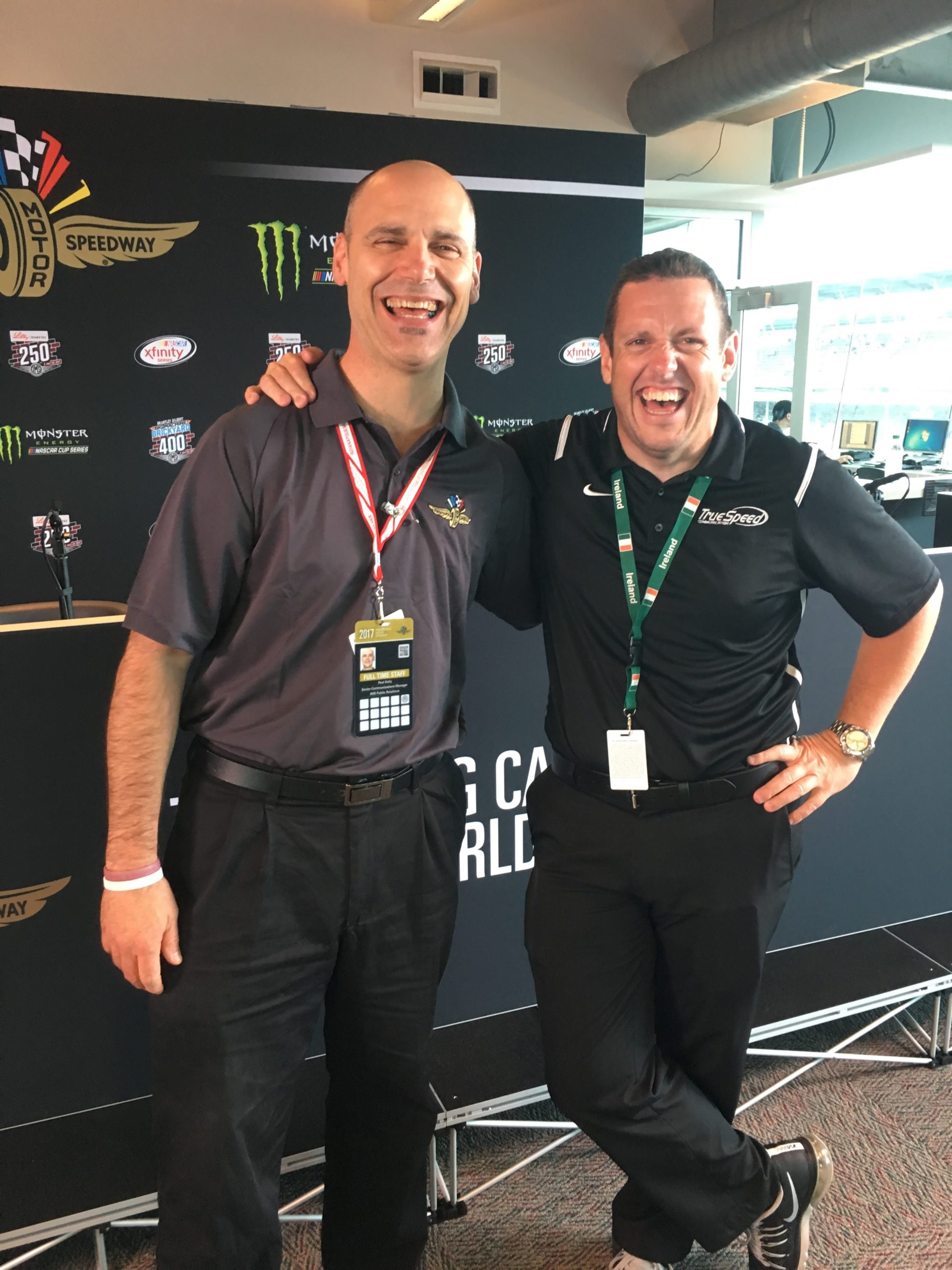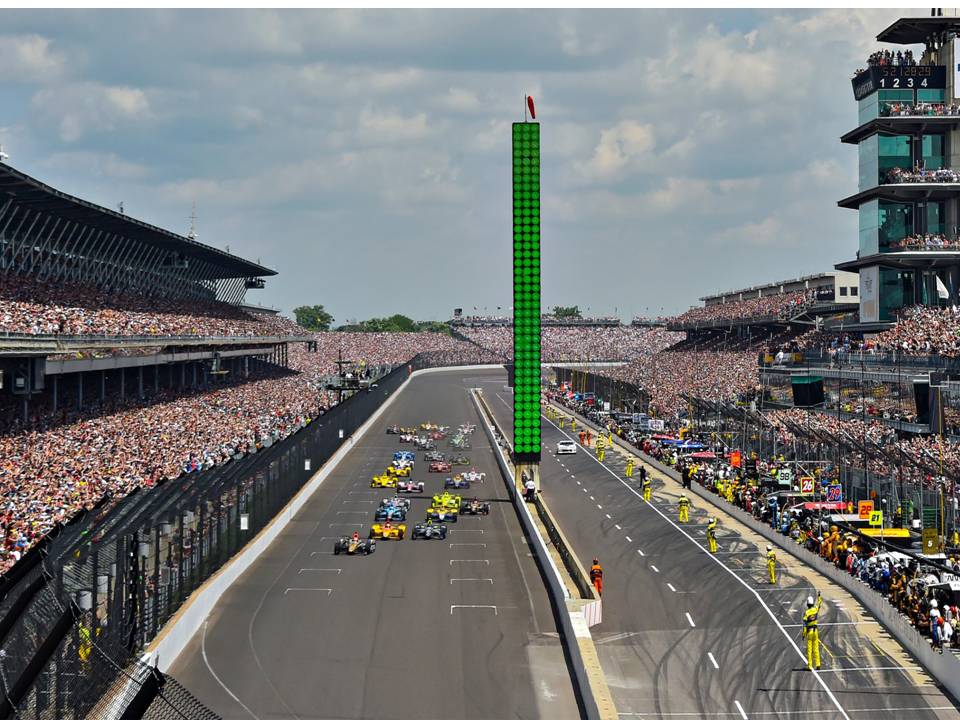This week I spoke to Paul Kelly, senior communications manager for the Indianapolis Motor Speedway – home of IndyCar racing and the Indy 500. He told me how motorsport is regarded in the US, what a young driver absolutely needs to make it over there, the most important rules when talking to US media and why Fernando Alonso became a superstar in the States.
Paul, how and why did you enter the world of motorsports?
For as long as I can remember I wanted to be a sports writer. So I went to journalism school in the mid-80s and after graduating I got a job with a small newspaper. One day, the sports editor asked me if I knew anything about racing. I said: ‘I watch the Indy 500 every year.’ So I got to cover motorsports, first local racing, then more and more national racing. When I started I didn’t really know anything about motorsports but I fell in love with the sport straight away. After a few years, I got the opportunity to work for the NHRA, the National Drag Racing Association. I looked after their PR for four years when, one day, I got a call from the Speedway. And when the Speedway calls, you come running! They had heard about me via a mutual connection and offered me a job, looking after their PR.
What does a typical day look like for you?
There is no typical day which is one of the reasons why it is so appealing. In short, I am in charge of everything that comes out written from the Speedway: email newsletters, programme content, press releases, scripts, letters, you name it. I have done other work in PR, including driver counseling, but writing and good story telling for the media and the fans is my first love and forte. I also deal a lot with the media and provide them with the information they need.

Paul Kelly (left) with Joe Crowley, today a NASCAR PR rep, at the Indianapolis Motor Speedway.
Let’s talk about motorsport in the US. How important is it compared to other sports?
Motorsports in the US is a niche sport that has a few major events each year. The Daytona 500 and Indy 500 are two events that transcend into and capture the public interest. It is a far way off from basketball, football or baseball but it is a major niche sport.
The problem that motorsport faces here and probably around the world is that it is getting more and more difficult to capture the attention of the millennials. When I was younger I couldn’t wait to turn 16 to get my driver’s license and all my friends wanted to buy an old car and work on it. That’s not the case anymore. The kids of today don’t really care about racing, there is so much other entertainment out there. Some of the race series have been trying to address this issue recently, with e-sports and digital platforms. But there is still a long way to go.
How does F1 register in the US?
F1 has a loyal and devoted hard-core fan base over here and NBC captured the attention of a lot of people with a very American broadcast of a global sport.
The one thing that Americans always say about F1 though is ‘make better racing’. If you want to be successful in American racing and want to be a driver Americans like, stand on the gas. Overtake. Be a real racer. That resonates. You have got to entertain in the States. Sport is entertainment here. There is so much more entertainment out here, so you need to stand out.
What is the main difference between an American and a European race series?
From having worked with F1, MotoGP and the Red Bull Air Race I’d say European races are much more structured than US series. That’s a blessing and a curse. It’s a blessing because there is very little grey area and you just follow the rules. Take credentials for example. At a European race, you are either on the list or you are not. In the US the approach used to be less strict but we have tightened our procedures since working with European series. The negative is that European series tend to treat every market the same. That doesn’t work as every market is unique. In the United States, for example, you have TV network affiliates which means that one network will send a number of local networks to a race. For an F1 race, each broadcaster can have one accredited crew, end of story. So you need to find a common ground. I’d like to think that we have learned from each other.
If you are a young driver in the US, how do you make it to the top? And how important is PR on the way up?
You have to have results. It might be a cliché but it is true that America likes winners. This country is very marketing driven, big on the show. If you don’t get results we cast you off very quickly. In America it’s either ‘we love you’ or ‘you suck’. There is no in-between.
And if you are not winning what are your options?
You’d better really connect with the fans. You can do that with the help of social media and good PR because it is not true that you can do everything with social media alone these days. A young driver needs PR but he also needs PR counseling because social media gives you an instant opportunity to get your thoughts out to the world.
In Europe PR often has a slightly negative touch to it. How is the PR role regarded in the US?
The race PR role in the US is seen as much more necessary. Racing is interaction with the fans and that has become more important over the last 20 years. The sponsors and the fans demand access to the drivers. Also, especially in NASCAR, it is normal for a driver to weave in his sponsors into his answers. Sponsor integration is much more common and widespread in the US than it is in Europe.
So a driver needs to learn how to interact. Plus there are so many different kinds of media today. 20 years ago you had to worry about TV, maybe radio. Now you have blogs, vlogs, websites, podcasts, social media, the traditional media, you name it. So there is definitely more need for PR counseling than ever before because it is such a huge and confusing matrix of media that a young driver needs to navigate today.
What’s the relation between the media and the PR managers in the US?
I think in Europe the relationship can be more confrontational and the PR is seen as a gatekeeper. In the US, the relationship is more cooperative and amicable. The drivers are more accessible to the fans and the media. The PR managers are there to help. In the US, you’ll probably hear ‘Yes’ a lot more ore than in Europe.
In Europe, a lot of the young drivers just want to drive and don’t want to do any PR or sponsor activity. How does that resonate in the US?
I worked in trainee series and met a lot of young drivers then. They all knew they had to do PR to get to the top. They wanted to learn and many of them asked me after an interview ‘how did I do?’
Unfortunately, there is no template and it can be difficult to find the right balance between being too hot-headed and not saying enough. However, in the US there is more scope to be yourself, to show your personality. You’ll find that drivers give a lot less standardized answers here than in Europe.
Of course, it happens now and then that a driver has a bad run and doesn’t want to talk. But fans demand access, the sponsors demand access. In the US, you don’t want to be the driver who doesn’t talk to anybody, simply because you cannot afford to.
What advice would you give a young European driver who gives his first interview to a US media?
Be yourself and be willing to show some of yourself. Be engaging. Remember the media are not your enemy. Most of the media here that cover motorsports do it because they love it and they want racing to grow and succeed. So if you are cooperative and make that genuine connection with the American fans, through traditional or social media, you’ll gain a lot of traction.
Is there something like bad PR? Or is any PR good PR?
That’s a tough question. The US is the land of second chances. However, with motorsport being a niche sport, there simply aren’t that many US companies lining up to sponsor race drivers. So I don’t think you can afford the ‘any PR is good PR’ approach. Instead, work your way up the right way than do something really stupid that gets you attention. In the US, you’ll get fewer chances to be in the spotlight, so you need to make sure you’ll use them right.
Would you say that PR needs to be done differently depending on the country and the culture? Or should a driver stay true to himself?
Both really. Let me use a case example: Silvia Hoffer who is Fernando Alonso’s PR came over last year with Fernando for the Indy 500. She handled all media requirements beautifully because she prepared Fernando for the way it is done in the US. So when his engine gave up during the race and he jumped out of the car and 300.000 people stood and applauded a guy from Spain, that doesn’t happen very often. It happened because he was real and he made real connections with the people. He showed genuine enthusiasm, he wanted to be there. He embraced the American culture and its differences but he was uniquely European at the same time. Plus he is a real racer. The American fans loved him for it.






